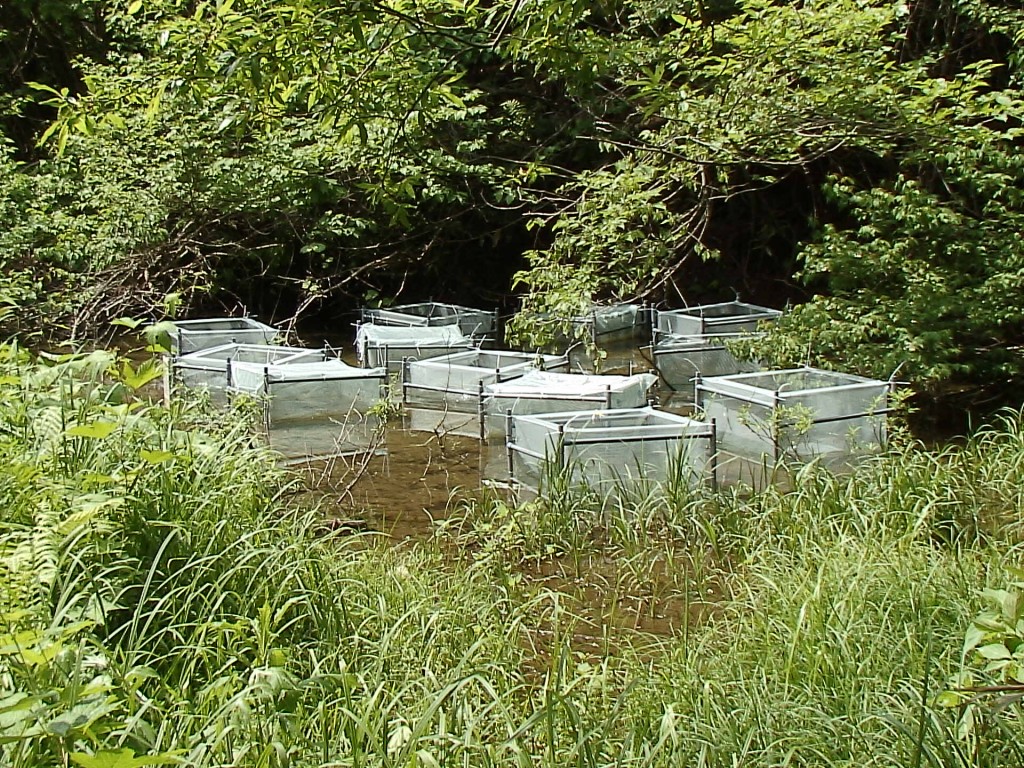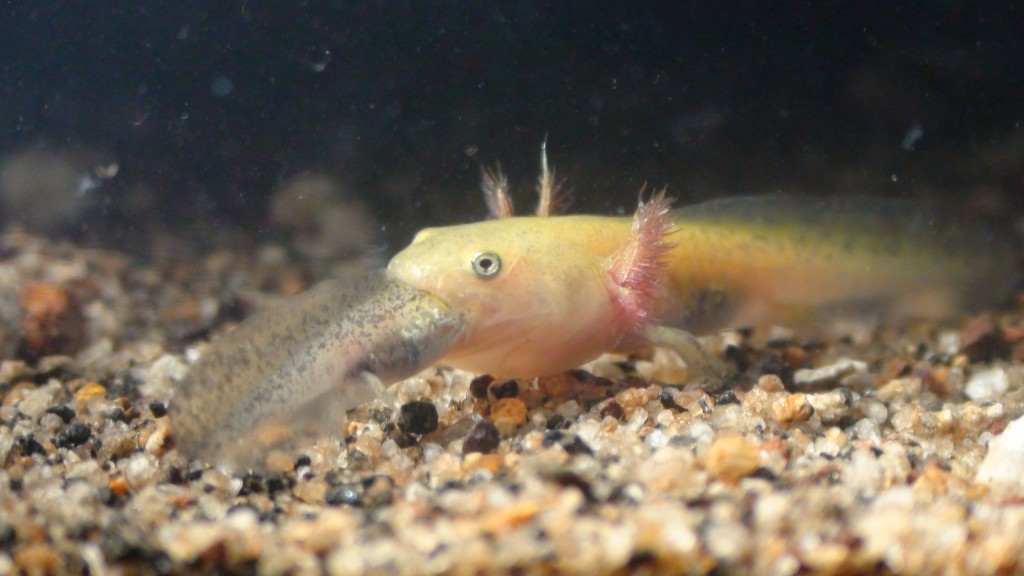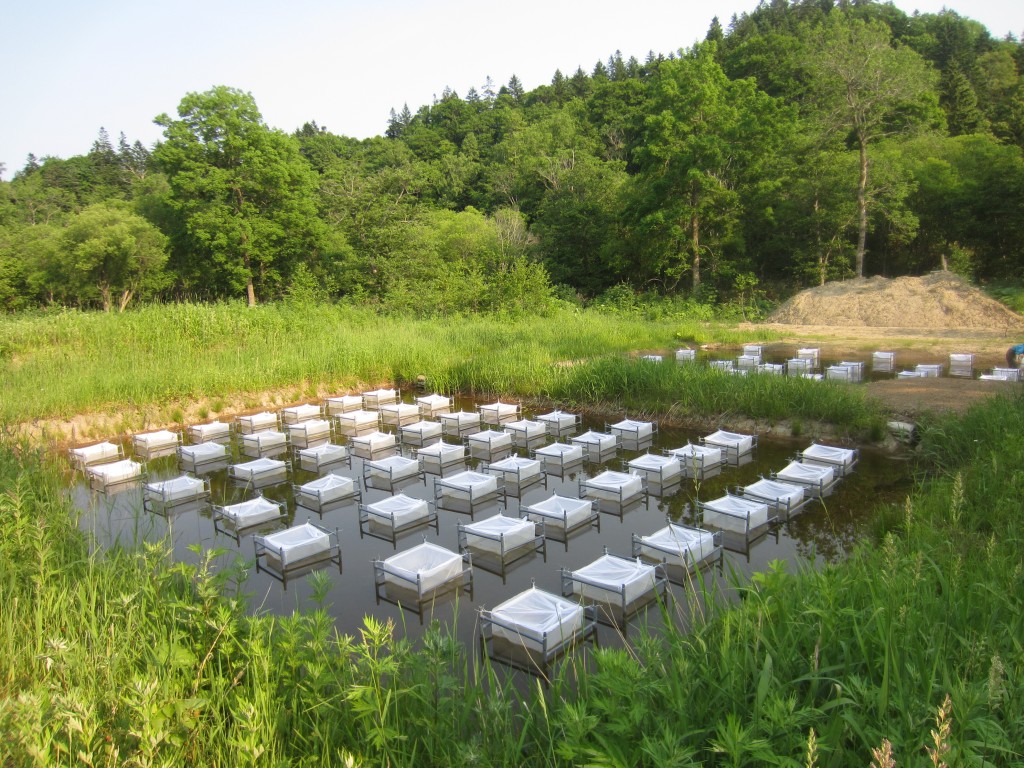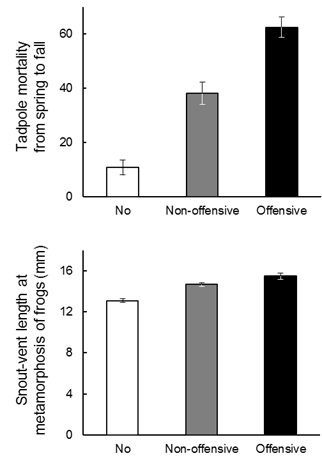Prey defenses intensify predator cannibalism
The expression of an inducible defense by a prey organism affects not only the fitness of the prey species but also that of the predator species. To test this hypothesis, we placed 74 bulgy R. pirica tadpoles (defensive-prey treatment) or 74 non-bulgy tadpoles (non-defensive-prey treatment) in enclosures with 16 salamander larvae. Then we compared the survival rates of the frog tadpoles and the salamander larvae between the two treatments. After three days, tadpole survivorship was 27% higher in the defensive-prey treatment than in the non-defensive-prey treatment. In contrast, salamander survivorship was 12% lower in the defensive-prey treatment than in the non-defensive-prey treatment. These results suggest that the predator’s diet shifts in the face of the prey’s defense and that the larvae become more cannibalistic (Kishida et al. 2009). Thus, the prey’s inducible defense affects the population dynamics of both the predator and prey.

Experimental enclosures in a natural pond

Cannibalism of salamander larvae
Reference
Kishida O., Trussell GC., Nishimura K. & Ohgushi T. (2009) Inducible defenses in prey intensify predator cannibalism. Ecology. 90:3150-3158
The complicated consequences of a predator’s offensive phenotype
How does the offensive phenotype of a predator affect the demography and life history of its prey? To answer this question, we conducted an experiment with R. pirica tadpoles and H. retardatus larvae with or without a broadened gape width (an offensive morph) in enclosures in artificially constructed ponds. The presence of offensive salamander larvae in enclosures with tadpoles greatly reduced tadpole survival and the emergence of metamorphs, compared with their survival in enclosures containing non-offensive salamander larvae or only tadpoles. In addition, tadpoles in the enclosures with offensive salamander larvae were larger when they metamorphosed. Moreover, salamander larvae with the offensive morph in enclosures with tadpoles were also larger when they metamorphosed, compared with larvae without the offensive morph in enclosures with or without tadpoles. Thus, an inducible offense in a predator can strongly affect the phenotypes of both predator and prey across multiple life stages.
Reference
Kishida O., Costa Z., Tezuka A. & Michimae H. (2014) Inducible offences affect predator-prey interactions and life history plasticity in both predators and prey. Journal of Animal Ecology. 83:899-906.


